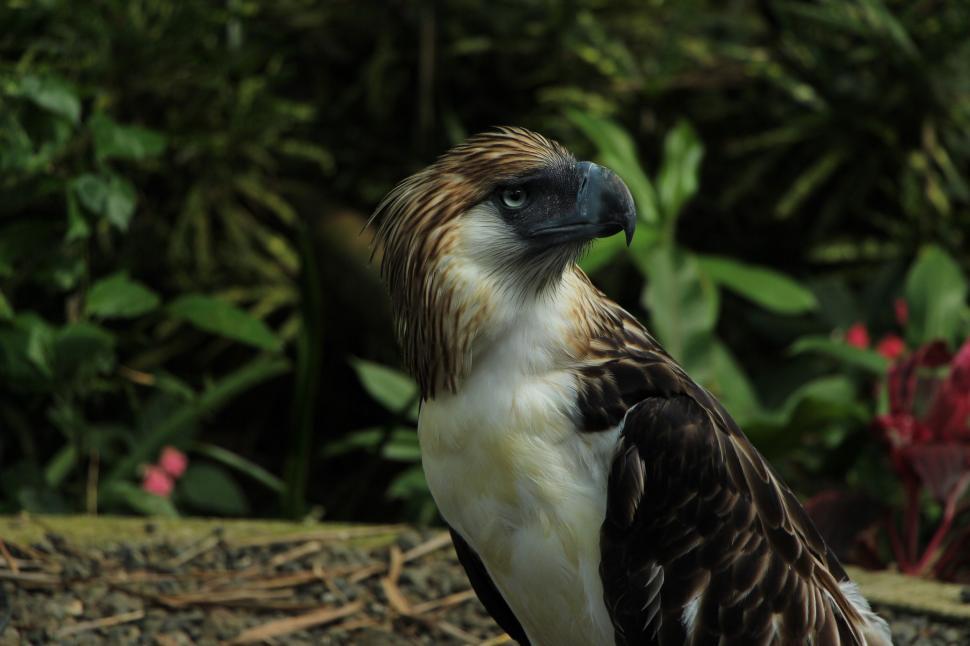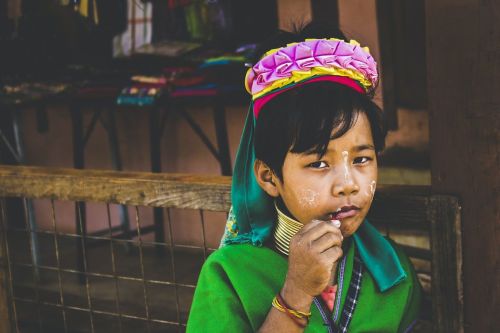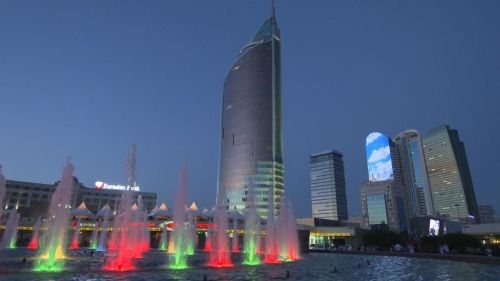The Philippines, an archipelago hiding in its embrace of countless islands that constitute a kind of pearl of Southeast Asia, captivates with its extraordinary diversity. It is a land where magnificent white sand beaches, lush tropical forests, mystical volcanoes, and cultural richness meet. A bridge between Eastern and Western influences, the Philippines entices with its blend of tradition, history, and exciting modernity.
Not only is the Philippines a land of breathtaking natural beauty, but it is also a place rich in history, where ancient civilizations intertwine with modernity. It's thousands of islands with extraordinary monuments, a mysterious underwater world of coral reefs, unique cuisine, and deep-rooted traditions.
Officially, the Philippines is the Republic of the Philippines, a country with an area of 300.000 square kilometers. It lies in the western Pacific Ocean, between China and the Indochina Archipelago.
Through territorial waters, the Philippines borders Indonesia to the south, Malaysia to the southwest, Vietnam to the west, and China to the north.
The largest islands are Mindanao, with an area of 95.000 square kilometers, located in the south, and Luzon, with an area of 105.000 square kilometers, located in the north. Both of these islands cover two-thirds of the country's total area.
Most of the islands are mountainous, covered with dense rainforest, and are of volcanic origin.
This makes the Philippines the fifth country in the world with the longest coastline, after Canada (202.080 kilometers), Norway (83.281 kilometers), Indonesia (54.728 kilometers), and Russia (37.653 kilometers).
Mount Apo is a large stratovolcano located on the island of Mindanao in the province of Cotabato. The peak is located 40 kilometers from Davao City. Apo has a flat summit with three peaks, on which there is a 500-meter-wide crater with a small volcanic lake. There are solfataras (fumes of volatile components of magma), which usually accompany dormant and extinct volcanoes.
The peak was first summited on October 10, 1880, by Joaquin Rajal. Today, Apo is one of the more popular and easier mountain climbing destinations in the Philippines. The date of its last eruption is unknown.
In 1936, the peak was protected and became a national park. It is home to more than 270 species of birds, nearly a hundred of which are endemic. Apo is the endemic center of Mindanao Island. It is characterized by high biodiversity per unit area.
The Department of Environment and Natural Resources has declared Apo Volcano a UNESCO World Heritage Site.
The Philippine Ditch is an oceanic trench in the western Pacific Ocean, at the bottom of the Philippine Sea, east of the Philippine Islands. The ditch is 1330 km long, about 60 km wide, and has a maximum depth of 10.497 m (Cape Johnson depth), or 10.540 m (Galathea depth), or 10.830 m (Emden depth) - depending on measurements.
The southern part of the Philippine Trench is perhaps the deepest place in the Omniocene - the Mindanao Trench, which has a depth of 11.524 m, but this has not been confirmed by control measurements.
It has a total length of about 505 kilometers and a catchment area covering 27.753 square kilometers. It is located in the Cagayan Valley region in the northeastern part of the island of Luzon. Its main tributaries are the Pinacanauan, Chico, Siffu, Mallig, Magat and Ilagan rivers.
The Cagayan River and its tributaries are prone to extensive flooding during the monsoon season, which in Southeast Asia lasts from May to October. In November 2020, after Typhoon Vamco (known in the Philippines as Typhoon Ulysses) hit, the river peaked and caused flooding in its vicinity. It was one of the worst floods in the river's history.
The Cagayan flows through one of the few remaining primary forests in the Philippines. It supports the lives of many endemic and endangered species, such as the Luzon bleeding-heart (Gallicolumba luzonica ), the Philippine eagle (Pithecophaga jefferyi), and the rare river fish, locally known as Lobed River Mullet (Cestraeus plicatilis).
It is located southeast of Manila, the country's capital, on the island of Luzon. It is a freshwater lake with an area of 911-949 square kilometers, an average depth of about 2.8 meters, and an elevation of about 1 meter above sea level. Connected to Lago de Bay is Manila Bay, on the shores of which lies the capital Manila.
The lake is shaped like a chicken's foot, with two peninsulas jutting out from the northern shore, and it largely fills the large volcanic caldera Laguna (Laguna Caldera - a potentially volcanically active caldera and geographic depression in Rizal). In the middle of the lake is the large island of Talim.
Laguna de Bay is one of the country's main sources of freshwater fish. As a shipping route for passenger ships, the lake has been used since Spanish colonial times. It is also the source of water for the Kalayaan hydroelectric project.
The territory experiences frequent seismic and volcanic activity. Located in the east of the Philippine Sea, the Benham Plateau is an underwater region with about 20 earthquakes recorded daily, although most are too weak to be felt.
The last recorded major earthquake was on the island of Luzon in 1990 (a magnitude 7.7 quake on the Richter scale, which killed 1621 people).
There are fourteen active volcanoes in the archipelago, these include Mayon and Taal, which have a high explosiveness rating (85 degrees on the 100-degree scale). In 1991 there was an eruption of the Pinatubo volcano on the island of Luzon, which killed 600 people and destroyed 100.000 hectares of farmland.
Estimates indicate that the Philippines has the second-largest gold deposits, after South Africa, and one of the largest copper deposits in the world. There are also rich deposits of zinc, chromium, and nickel. However, poor management, as well as many other factors, contribute to these deposits being largely untapped.
The Philippines, on the other hand, has been extremely effective in harnessing geothermal energy from volcanoes. They are the world's second-largest producer of geothermal energy, after the United States, supplying 18% of the country's electricity needs.
The Wallace Line is a biogeographic barrier first drawn in 1863 by Alfred Russel Wallace, British naturalist, and explorer, with co-author Charles Darwin, of the theory of evolution by natural selection. This is a hypothetical line, a conventional boundary that separates Australasia (a geographic region including Australia, New Zealand, New Guinea, and a number of islands and archipelagos in the Oceania region) from mainland Southeast Asia. The line runs between the islands of Bali and Lombok, east of Java, continues between Borneo and Celebes, and passes south of the Philippines.
Wallace was one of the first to note some characteristic differences in biota between these areas. The west of the line is dominated by oriental species, characteristic of Asia (tigers, Asian elephants, monkeys), while the east is dominated by Australasia (kangaroos, wombats, koalas, and birds of paradise).
The Wallace line is a key element of biogeography, helping to understand the distribution of species on Earth and the evolutionary processes that shape biodiversity on our planet.
The first is tag-init or tag-araw - the dry and warm season lasting from March to May, tag-ulan - the rainy season lasting from June to November and tag-lamig - the temperate dry season lasting from December to February.
There are seasonal winds - monsoons - that change direction to the opposite depending on the season. The southwest monsoon (May to October) is known as Habagat, and the dry winds of the northeast monsoon (November to April) are known as Amihan.
The average annual temperature there is about 26.6°C. The perceptible temperatures in the Philippines are exacerbated by the high humidity, which is 80% or higher year-round and even reaches 100% during the monsoon.
Tropical cyclones, which locally (in East and Southeast Asia) are called typhoons, are common there. Islands located in the typhoon zone experience heavy rains and thunderstorms from July to October.
It has one of the highest rates of biodiversity per unit area - 1736 species per 100 square kilometers. There are about 1100 species of terrestrial vertebrates, including more than 100 species of mammals and 170 species of birds that are believed to be found nowhere else.
There are about 13.500 plant species, 3200 of which are found exclusively in the Philippines. Rare species of orchids and rafflesia (Rafflesia arnoldi) are found in the rainforest. The tropical climate is conducive to the growth of flowering plants, including the ylang-ylang or Sampaguita (Jasminum sambac) - considered one of the most beautiful flowers in Asia and the Pacific, and is also the national flower of the Philippines.
These waters are part of the so-called Coral Triangle, a tropical marine area located in the Pacific Ocean that is home to the greatest marine biodiversity in the world. It is home to 76% of known coral species, 6 of the 7 existing species of sea turtles, and at least 2228 species of reef fish, earning it the nickname "hatchery" or "cradle of the seas" or "Amazon of the seas." It is also an important tuna breeding and transit area.
The marine waters of the Philippines are home to 2400 species of fish and more than 500 species of coral. The Apo Reef, located in the Mindoro Strait and covering 34 square kilometers, is the largest continuous coral reef system in the country and the second largest in the world. The reef and its surrounding waters are a protected area administered as the Apo Reef Nature Park. It is one of the most famous and popular diving areas in the country. It is placed on UNESCO's preliminary list of world heritage sites.
The waters of the Philippines are also conducive to pearl, crab, and seaweed farming.
The Philippine eagle is the largest of the eagles - the world's largest bird of prey. It is a species endemic to the forests of the Philippines, inhabiting the island of Luzon and the island of Mindanao, the provinces of Samar and Leyte. Its most numerous population is found in Mindanao (from 82 to 233 breeding pairs).
It is a bird with beautiful long brown feathers on its head, forming a magnificent mane in the manner of an African lion. Its body length ranges from 86-102 cm and its weight from 4.5 to 8 kg. Its wingspan reaches 184-220 cm, and its beak length averages over 7 cm.
It is an endangered species, mainly because the Philippines has one of the highest deforestation rates in the world, and the eagle lives in forests.
The Philippine eagle has been the national animal of the Philippines since July 4, 1995.

It is a species of jasmine native to tropical Asia, commonly cultivated there as an ornamental plant and for its strongly fragrant flowers. Sambac jasminum was adopted by the Philippines as the national flower on February 1, 1934. Filipinos make garlands from flowers, which are used as a form of showing reverence or distinction. They are used to decorate religious images, processions, and photographs of the dead. Strings of these flowers are placed around the necks of various dignitaries, guests, and graduates. They are used to decorate state ceremonies at Malacañang Palace (the official residence of the President of the Philippines), weddings, and other events.
The design of ceremonial torch for the 2019 Southeast Asian Games, designed by Filipino sculptor Daniel Dela Cruz, was inspired by the Sampaguita.
Symbolically written as ₱. 1 peso = 100 centavos. Monetary policy in the Philippines is conducted by the Bangko Sentral ng Pilipinas (BSP), established on July 3, 1993, as the central bank.
The Philippine peso is derived from the Spanish peso, or eights (Spanish dollar - a silver coin about 38 mm in diameter and worth eight Spanish reales), brought in large quantities from Spanish America by Manila galleons from the 16th to 19th centuries.
Thanks to its geography and biodiversity, the Philippines has many nature parks that are major tourist attractions. In 2019, 8.2 million foreign tourists arrived there, most of them from East Asia and North America.
The region's main tourist destinations are Manila, Boracay Island, Coron Island, the Puerto Princesa underground river, the rice terraces of the Philippine Cordillera, and the city of Vigan.
Manila was the first city in the Philippines to be granted municipal rights in 1901 and autonomy on June 18, 1949. The city is considered part of the original group of global cities in the world, as its trade networks were the first to stretch across the Pacific Ocean and connect Asia to Spanish America through the galleon trade. It was then that an unbroken chain of trade routes circling the globe was first established.
As of 2019, Manila is the most densely populated city in the world (46.178 inhabitants per square kilometer). It is one of the most populous and fastest-growing cities in Southeast Asia, the second most populous city in the Philippines, and one of the largest metropolises in the globe, with a population of more than 24 million together with its suburbs.
The Philippines' population is estimated to reach 116.086.000 in 2024. More than ten million Filipinos live outside the country.
It was found in 2006 by a fisherman who didn't inform anyone about the find for ten years, finally carrying the pearl to a tourist office. It was quickly realized that the specimen was unique; it was 61 cm long, 30 cm wide, and weighed 34 kg. Gemmologists estimated the pearl's value at approximately $100 million.
It was formed under completely natural conditions, formed by the giant appendage (Tridacna gigas), the largest species of clam in the world.
Filipino is an adapted form of Tagalog (Tagalog - one of the most important languages in the Philippines), enriched with vocabulary from other Filipino languages. It is the native language of much of the population in the central regions of the Philippines, with some 25 million people using it.
The Constitution also designates regional languages such as Bikol, Cebuano, Ilocano, Hiligainon, Pampango, Pangasinense, Tagalog, and Samareño as auxiliary official languages. Spanish (there are currently about 400.000 Spanish speakers) and Arabic are also used voluntarily.
Although the Philippines is a secular country and the constitution guarantees freedom of religion, for the vast majority of Filipinos religion is very important. One of the most widely practiced religions there is Christianity (over 90% of the population), particularly Catholicism, which is practiced by some 80.6% of the Philippine population. Catholicism was introduced to the Philippines by Spanish missionaries during the colonial era.
The country's second-largest religion is Islam, at 6.4 percent. Most Muslims live in Mindanao and nearby islands. Most belong to the Sunni Shafi'i school of Islam.
About 0.2% of the population adheres to indigenous religions, whose practices and folk beliefs are often related to Christianity and Islam.
They sometimes refer to the Banaue Rice Terraces - agricultural terraces carved into the Banaue Mountains in Ifugao province by the ancestors of the Igorot people (indigenous inhabitants of the Cordillera mountain range in northern Luzon). They are believed to have been created largely by hand.
The terraces are estimated to be more than 2000 years old, but several researchers dispute this estimate, believing that they were created much later. It is known, however, that rice is an ancient ancestral crop of the Philippines, having been brought to the islands by Austronesian migrations since at least 1500 BC.
The terraces are about 1500 meters above sea level. They are fed by ancient irrigation systems from the rainforest growing above them. Locals still grow rice and vegetables on the terraces, although farming is not an attractive industry for the young. The terraces are gradually eroding, and are also being destroyed by giant earthworms of the genus Pheretima ("olang" in the Ifugao language), as well as rodents of the genus Chrotomis mindorensis and snails.
The arrival of Portuguese explorer Ferdinand Magellan to the Philippines in 1521 marked the beginning of Spanish colonization of the islands. In 1543, Spanish explorer Ruy Lopez de Villalobos named the archipelago Las Islas Filipinas in honor of King Philip II of Castile.
Spanish settlement of the islands began in 1565 when Spanish explorer Miguel Lopez de Legazpi arrived from New Spain and established the first Spanish settlement in what is now Cebu. The Spanish established Manila as the capital of the Philippines and the Spanish East Indies. Their rule over the islands brought political unity to the archipelago for the first time in history.
Christianity became the dominant religion, and Manila became the western center of Trans-Pacific trade.












